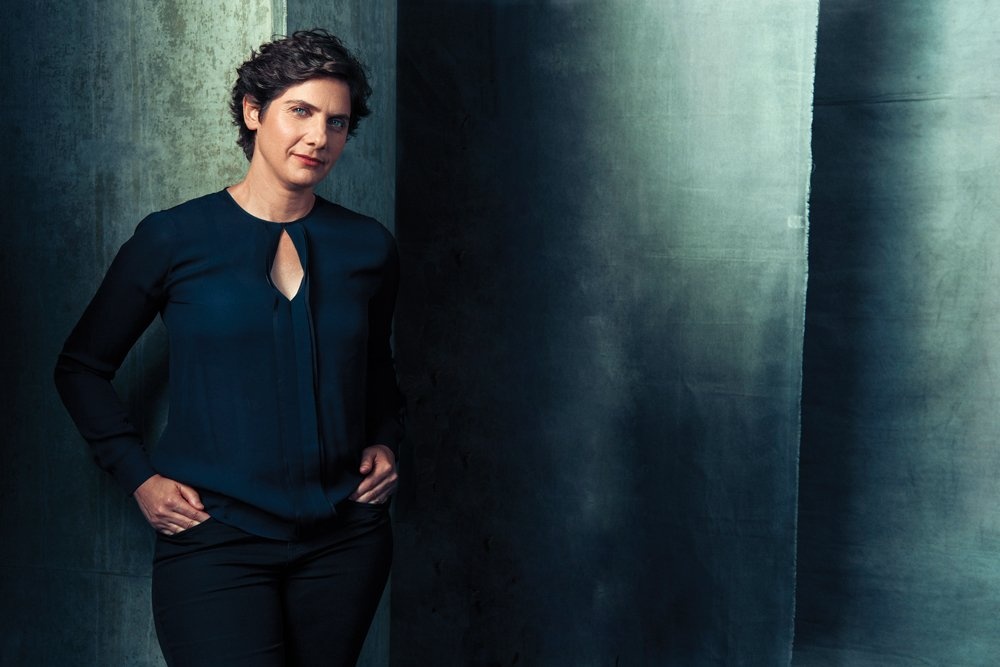Columbia College | Columbia University in the City of New York
Moira Demos ’96 Returns to the Scene of the Crime

Austin Hargrave / Netflix
Once you’ve created a cultural phenomenon, what do you do for an encore? Moira Demos ’96, SOA’08 and Laura Ricciardi SOA’07, the filmmakers behind the true-crime Netflix docuseries Making a Murderer, took a somewhat meta approach: They returned to Manitowoc County, Wis., to grapple with a world changed by the impassioned response to their work.
Part 1 of Making a Murderer, which won four Emmys in 2016, chronicled the trials of Wisconsin man Steven Avery and his teenage nephew, Brendan Dassey, who were convicted of the 2005 murder of a 25-year-old woman. The defense claimed that Avery was framed by police — retaliation for a multimillion-dollar lawsuit he filed against Manitowoc County after a 1985 wrongful conviction for sexual assault and attempted murder. The question of whether coercive interrogation tactics might have elicited a false confession from the learning-disabled Dassey provided an equally sensational subplot.
The series’ first installment became a binge-watching hit and sparked intense discussions on social media. Demos marvels at “the response from so many different people — different backgrounds, different education, different races, different countries. ... We really couldn’t have expected or dreamed of anything that great,” she says. “We were thrilled.”
In October, Netflix released Part 2, featuring Avery’s and Dassey’s lawyers as they attempt to dismantle the cases against their clients. “Things can happen in the darkness much more easily than when a bright light is being shone on them,” says Demos. “Now we’re going to watch how it plays out with more attention.”
A second season allowed Demos and Ricciardi to examine the effect of the series’ popularity on the cases. Part 1 inspired hundreds of thousands of people to sign petitions calling for Avery and Dassey to be released. But while Making a Murderer casts doubt on their convictions, Demos maintains that for her and Ricciardi, who are a couple, the goal was to expose viewers to the flaws of the U.S. criminal justice system.
“Our hope is that [viewers] come away with a much deeper understanding of what’s working and what’s not working,” Demos says. “That can affect how they make choices, how they behave in their own lives, in their own roles in the system, whether that be as jurors, as voters or as consumers of crime shows on TV.”
Making a Murderer Part 1, along with the podcast “Serial” and HBO’s The Jinx, arrived as part of a wave of true-crime entertainment that reignited interest in the genre. Demos would like to see its success inspire other filmmakers to pursue stories they find compelling. “Just because the world doesn’t want you or is telling you ‘no’ doesn’t mean that there’s not a place for what it is you’re offering,” she says. “Especially in the entertainment world, if what you want to make isn’t out there, people probably want it.”
Nathalie Alonso ’08, from Queens, is a freelance writer and an editorial producer for LasMayores.com, Major League Baseball’s official Spanish-language website.
Issue Contents
Published three times a year by Columbia College for alumni, students, faculty, parents and friends.
Columbia Alumni Center
622 W. 113th St., MC 4530, 6th Fl.
New York, NY 10025
212-851-7852
cct@columbia.edu
Columbia Alumni Center
622 W. 113th St., MC 4530, 4th Fl.
New York, NY 10025
212-851-7488
ccalumni@columbia.edu

